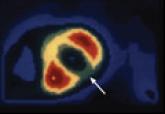Several readers have called The Journal of Family Practice to task for publishing a study by Esselstyn et al1 on the association of a very stringent plant-based diet and favorable cardiovascular disease outcomes. Two of those letters (from Larry E. Miller, PhD, and David A. Silverstein, MD) appear in this issue. In light of these letters, I thought it appropriate to describe why we published this study.
We can all agree that this study is not the definitive study of this highly restrictive vegetarian diet. It is a case series of highly motivated patients, and we do not know how these findings would apply to others. Dr. Esselstyn and his colleagues admit that “(w)ithout a control group, it is challenging to establish causality and assess how much of the observed changes are specifically due to the diet.”
I think we can agree, too, that case series can lead us astray. A good example is the randomized trials of knee arthroscopy for relief of knee pain from meniscal tears that found lack of benefit compared to earlier case series that showed significant improvement (see “Surgery for persistent knee pain? Not so fast”). In a case series, it is not possible to answer the important question: compared to what? Without a control group and randomization, we cannot know if outcomes are due to the treatment, another factor, or the natural course of the disease.
On the other hand, case series can be the first step in medical breakthroughs. The first known successful trial of penicillin was a case series of 5 patients with eye infections performed in 1930,2 and the first published description of acquired immunodeficiency syndrome involved case reports of 5 patients with pneumocystis carinii pneumonia.3
In the present case, I was intrigued by Dr. Esselstyn’s findings and believe the methods and biological plausibility were good enough to get the word out, mostly to stimulate others’ thinking and actions. That is why, after the manuscript underwent peer review, we decided to publish it.
In a separate letter to me, Dr. Silverstein wrote, “Sometimes if something seems too good to be true, it isn’t [true].” I could not agree more. But the flip side of that statement is that sometimes something that seems too good to be true, actually is true.
We do not yet know which of these statements applies to Dr. Esselstyn’s work. I do, however, agree with Dr. Esselstyn and his colleagues that “...the time is right for a controlled trial.”
